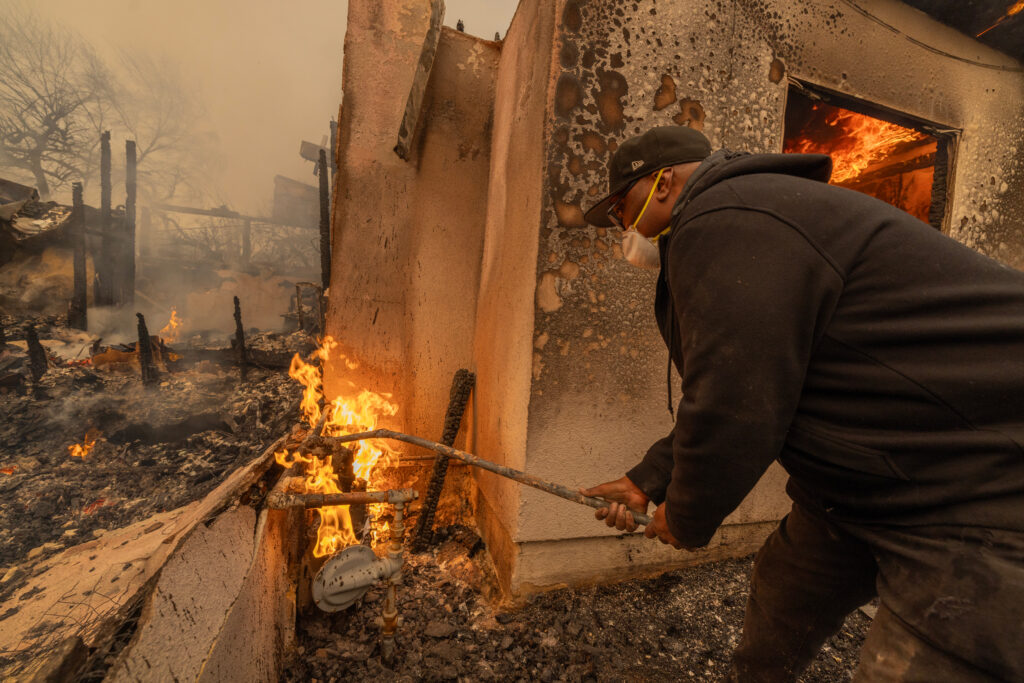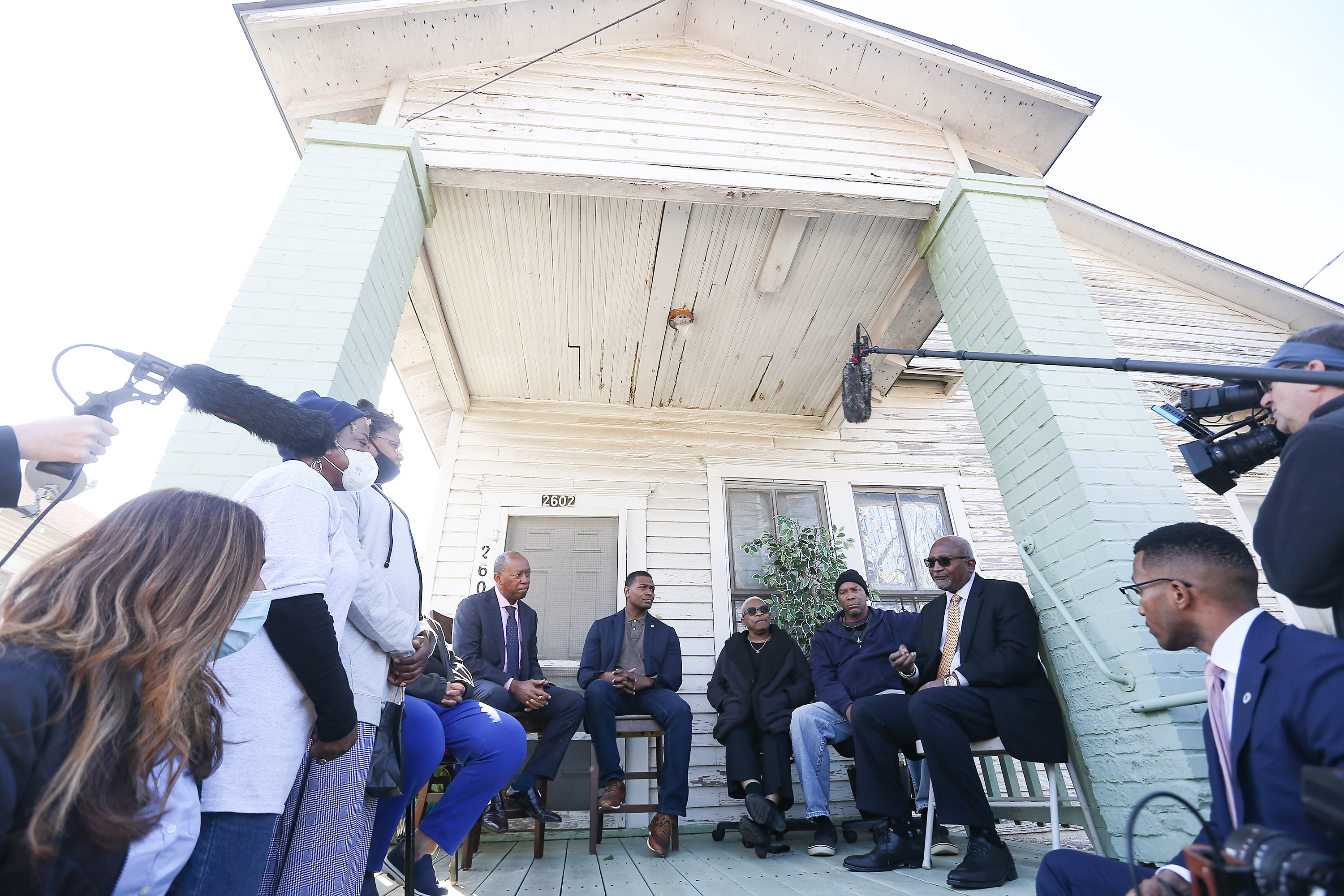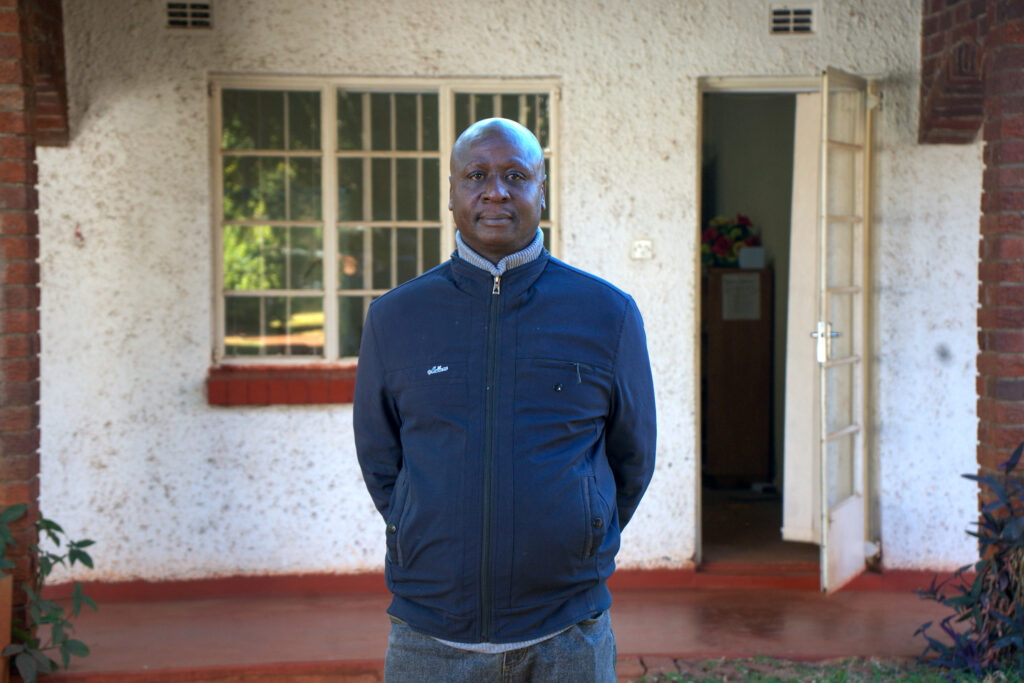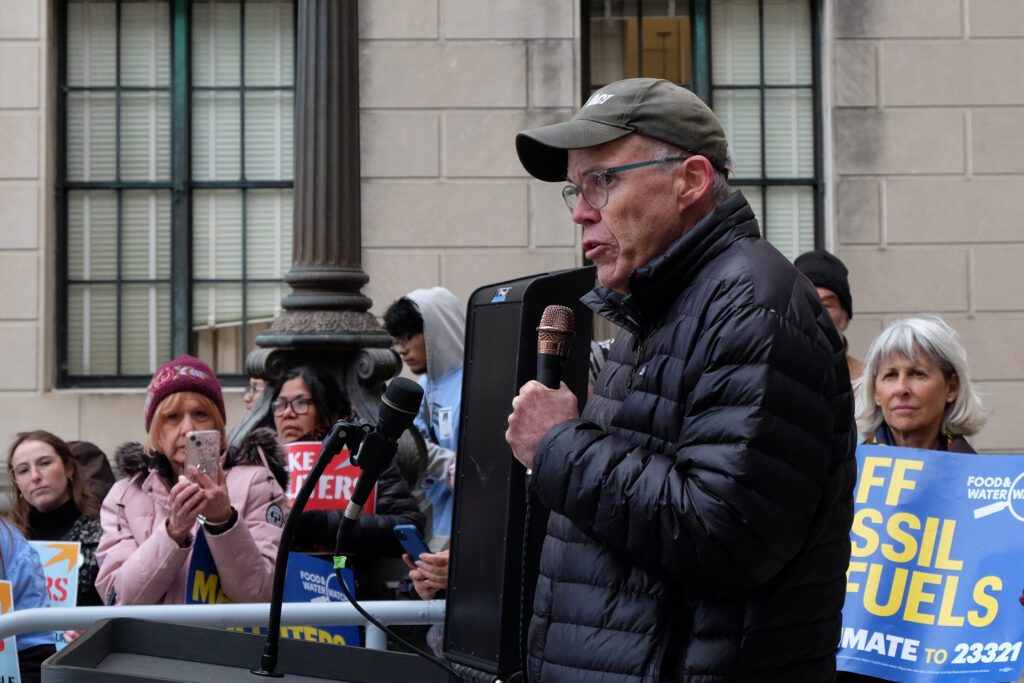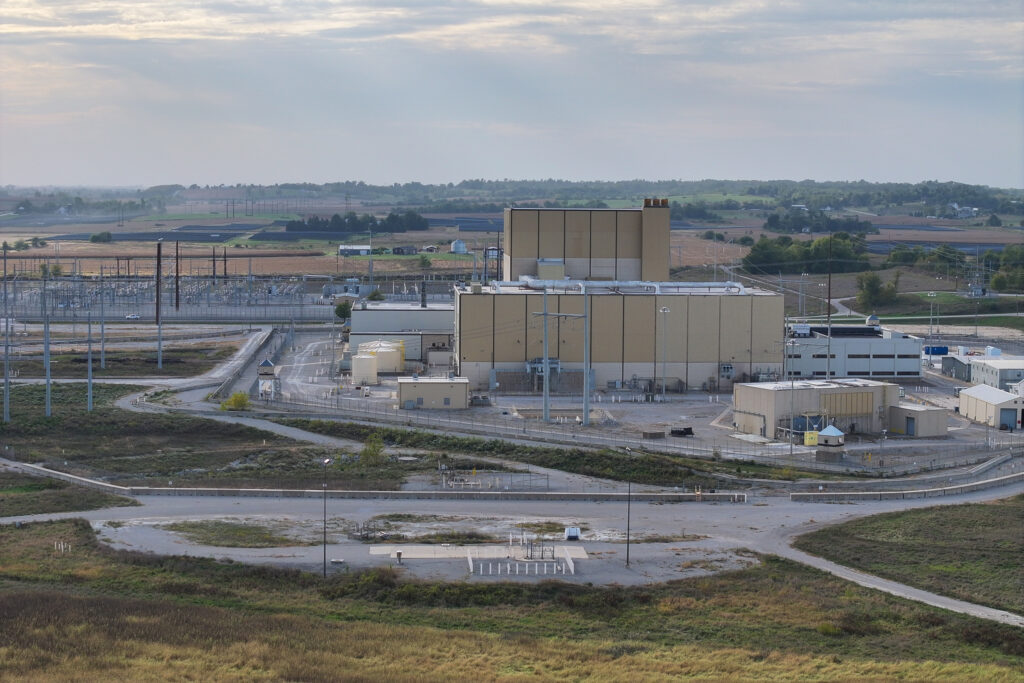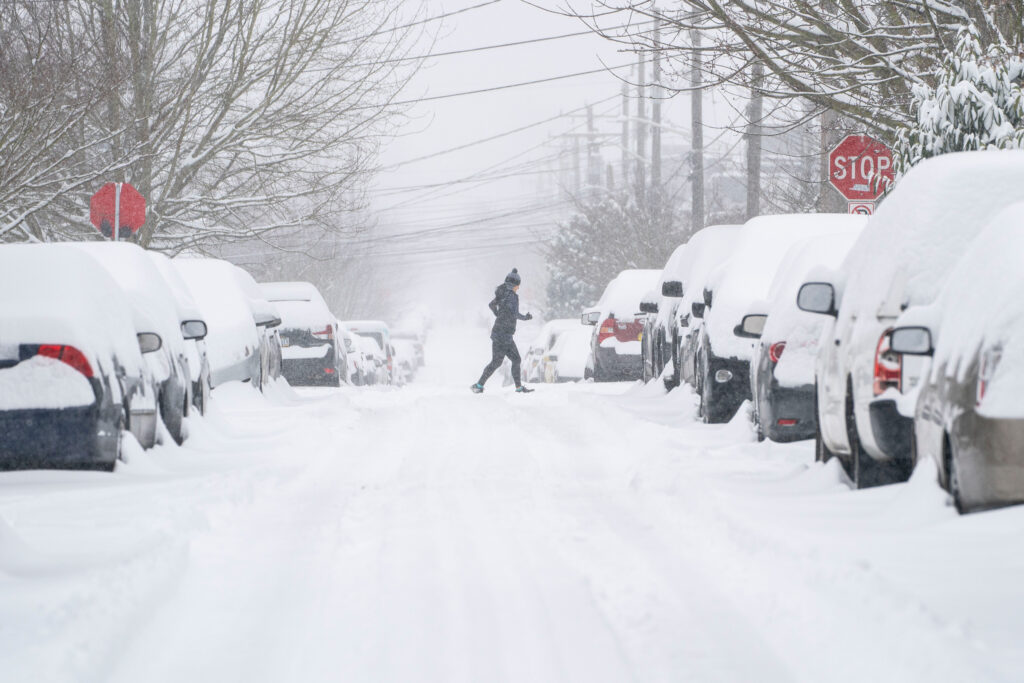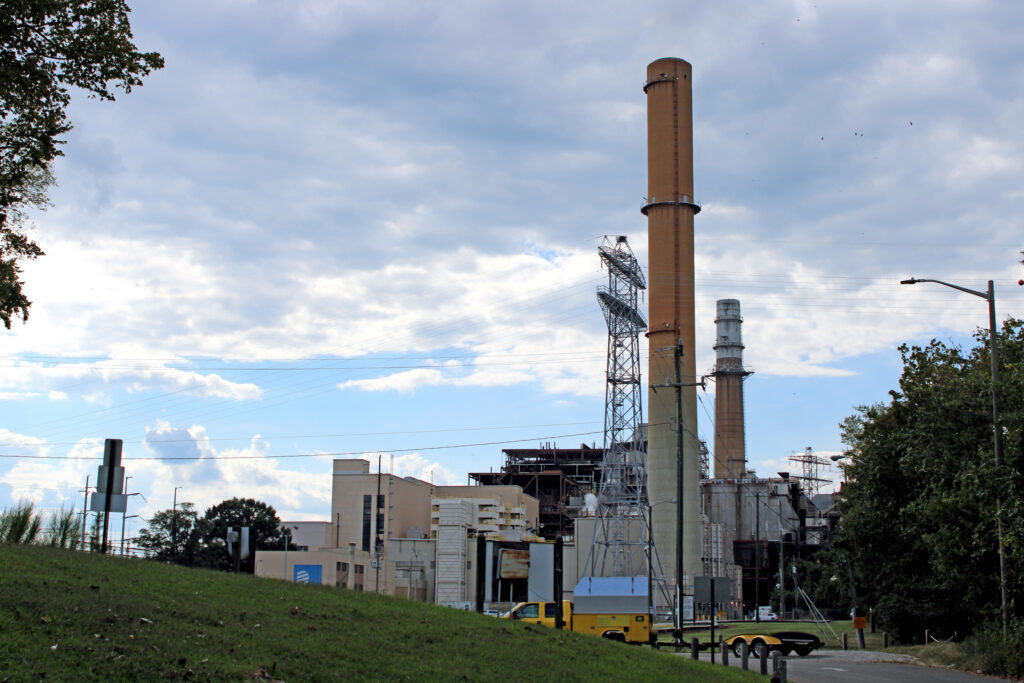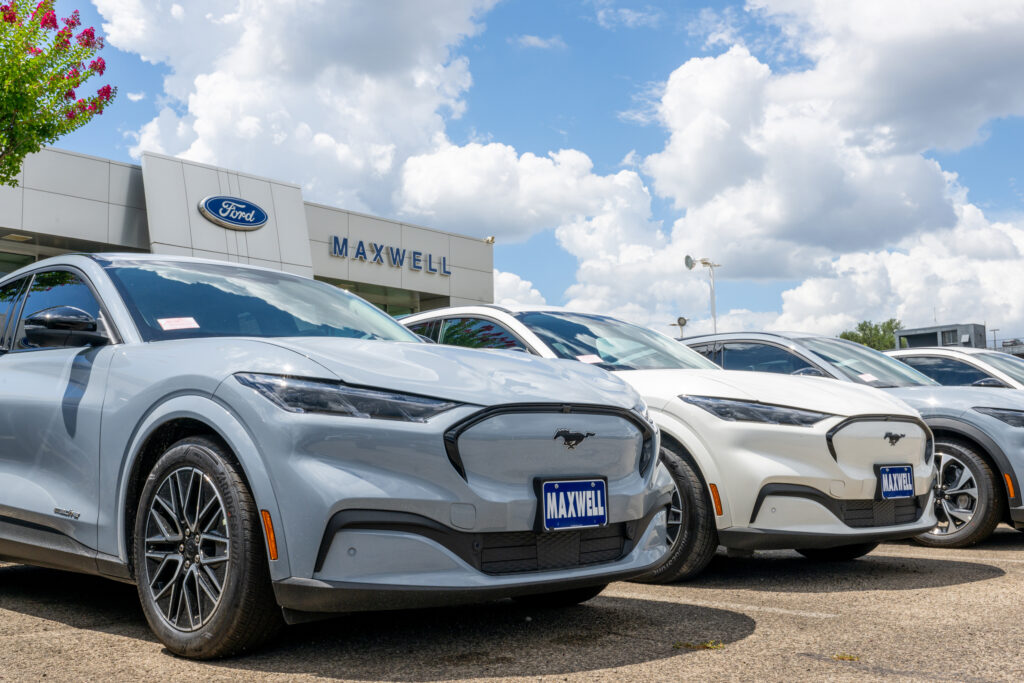ROLAND, Ark.—First came the gasps.
As the final sliver of sunlight disappeared behind the persistent moon, eclipse viewers at the Pinnacle Mountain State Park visitors’ center outside Little Rock were left in awe.
Nancy Carr had driven six hours from McCalla, Alabama, just outside Birmingham, to view the spectacle. As the sun’s corona began its silky show around the moon, she couldn’t help but say it out loud—she was so glad she made the trip.
Then, as she spoke, insects and birds began to react to the celestial dance, chirping and singing as if the sun had just risen. So, too, did her rescue dog, Clyde, a boxer mix from Mississippi, who seemed confused as the sky grew darker and other dogs, near and far, began to bark and howl as the day cooled quickly from a humid 80 degrees.
“This is the handiwork of the Lord,” a park ranger said, his mouth agape.

A few feet away, sisters Bente and Lisa Christensen took in what was their second total solar eclipse. They had traveled from Denmark to view the total eclipses—one in Nebraska in 2017 and now, their second, in Arkansas. The Christensens’ eclipse chasing sprang from Lisa’s work teaching physics to high school students. Now, they’re hooked.
The second eclipse was as good as the first, they said. They hope to see many more.
Across the country, millions of eclipse-goers from Texas to Maine were treated to a total eclipse of the sun. Millions more were—with appropriate eye protection—able to view a partial eclipse. Some, though, were luckier than others.


In Indianapolis, the light looked artificial and Arctic, cool and bright. As the moon eclipsed more of the sun, the temperature dropped and the birds stopped singing for a few minutes. Huge cheers erupted in the suburban neighborhood. It felt like a second sunrise. And, of course, there were fireworks.


In Washington, D.C., where the moon covered 89 percent of the sun, residents observed the phenomenon through NASA-provided glasses. The sun looked like an orange, glowing sliver of a fingernail, temperatures cooled by what felt like 20 degrees, and school children darted down the sidewalks, pausing every few steps to look up. An unusually dry, soft wind cooled the city, where humidity often reigns, even in early spring.
While weather in many parts of the country exceeded expectations—with cloud cover breaking for ideal conditions—others were left wanting.
As the impacts of climate change become more pronounced, weather uncertainty will become the rule, not the exception, climate scientists warn, potentially making planning to view natural events like a solar eclipse more difficult for those who may want to travel into the path of totality.
In Texas, for example, a major eclipse festival ended early due to the chance of severe weather. Its attendees were told to pack up and “prepare to leave the campgrounds promptly.”
Recent weather, too, impacted other Americans’ viewing experience. In Vermont, officials announced select site closures inside state parks as a result of “downed trees and safety concerns” following a recent snowstorm.
We’re hiring!
Please take a look at the new openings in our newsroom.
See jobs
Travel for the solar eclipse has significant climate impacts, too, with between one million and four million people in the U.S. expected to leave their homes to reach totality, all leaving behind some carbon footprint in their wake.
In Arkansas, the Christensens understand that impact, they said Monday, as the sun eclipsed above them.
“Our big climate sin is flying,” Berte said. But her family has made other lifestyle choices she feels provide some balance in terms of the impact she has on the environment.
“We also don’t have cars,” she said. “We live in a small apartment. We try to do our part every day.”


And governments like Denmark’s, she said, are making some of the macroeconomic policy choices that will be needed to bend the arc of warming in the right direction.
As totality concluded, Carr said she’d never experienced anything like the eclipse. The IT specialist, retired from the University of Alabama, said she didn’t regret the time—or fuel—spent to view the eclipsed sun.
“It was awesome,” she said. “It was one of the best things I’ve ever done in my life.”
It’s Not Always Sunny in Philadelphia
About 15 minutes before the partial eclipse neared its maximum point in Philadelphia, thick clouds rolled over the sun, blocking the moon’s progress from view. “This is exactly what always happens. You get right close to the maximum, and what happens, clouds show up,” said Derrick Pitts, chief astronomer at the Franklin Institute and the host of the science museum’s eclipse viewing party.
Standing on the museum’s front steps with a microphone in hand, Pitts was acting as an emcee for the event, explaining the science of eclipses and keeping track of time with frequent glances at his watch and countdown announcements. In between his updates, attendees danced to the DJ’s thumping playlist, squinted through free solar glasses, and huddled under solar viewing tents, looking up. “Hopefully we’ll get a little bit of clearing, we’ll keep our fingers crossed, but at least we’ll be here together for the maximum,” he said.
Pitts pointed out that the dimming afternoon had taken on a silvery, pearlescent quality, an effect of the eclipse. “We’re not going to have darkness here. But you will be able to see this coloration in the light,” he said. Across the square, the sky was flecked with clouds but still blue, a contrast to the soft gray aura around the sun, barely visible above the museum’s roofline.


Ten minutes before the eclipse’s maximum, Pitts relayed a report from a spectator whose son was attempting to view the eclipse in Austin, Texas. “A great place to see the eclipse except for the fact that the sky is completely overcast and they couldn’t see anything,” he said. “So we’re actually beating Austin, Texas right now.” He paused as the crowd cheered. “And of course we know our party is going to be better, anyway.”
At 3:23 p.m., the eclipse’s peak of 90 percent, Pitts implored viewers to take in the “power of the sun and moon together.
“Here we are at maximum. This is the point where the greatest amount of the disc of the sun is covered by the moon,” he said. The audience held up their phones to the sky, pressing cardboard solar glasses to their faces, though the clouds had not moved.
Despite the unlucky shift in the weather, Pitts’s mood was sunny. He was excited about Philadelphians’ enthusiasm for witnessing a scientific phenomenon, even if conditions were not ideal.
“Look how many people are standing in anticipation,” he said a few minutes before the maximum point, gesturing toward the waiting crowd, which stretched from the sidewalk in front of the museum to the park across the street and beyond. “And they can’t see anything!”
‘This Is Once in a Lifetime’
In St. Johnsbury, Vermont, thousands gathered on Main Street, where the Fairbanks Museum and Planetarium, the local natural history museum, hosted an eclipse viewing party at the gateway to the Northeast Kingdom.
A few last remaining patches of snow remained on the ground from a recent storm that capped an unusually warm winter and, at least momentarily, dampened concerns of climate change. The only looming existential threat on people’s minds seemed to be a massive space rock that for 1 minute and 41 seconds entirely blocked out the sun.


“It was like nothing I’ve ever seen,” said Kaito Masui, 11, from Arlington, Massachusetts, who took in the eclipse with his family, including Mochi, a black-haired poodle. “The sun looked so amazing, only a little bit of light got through.”
Nearby, St. Johnsbury resident Kevin Colosa watched the eclipse from his front porch.
“I’ve been waiting for this for 45 years,” Colosa said. “This is once in a lifetime.”
‘Just Look Up’
Seventy-five miles to the west, in Burlington, Vermont, eclipse-watchers got an extra show alongside three-and-a-half minutes of totality. About 10 activists from Climate Defiance, an organization focused on disruptive protests aimed at ending U.S. reliance on fossil fuels, staged a banner drop at the edge of Lake Champlain in an attempt to remind the public of the existential nature of the climate crisis.
“The eclipse was a time that we knew a lot of people would be together thinking about the atmosphere and life,” said Michael Greenberg, co-founder of Climate Defiance. “We wanted to send a provocative message that the eclipse is really cool and inspiring—and it’s also important to think about the Earth.”
This story is funded by readers like you.
Our nonprofit newsroom provides award-winning climate coverage free of charge and advertising. We rely on donations from readers like you to keep going. Please donate now to support our work.
Donate Now
The group arrived around 11 a.m., about four hours before totality. Although the group is known for bold, disruptive actions, this action was largely silent, Greenberg said. Just before the main event, the group unfurled banners that read “Just Look Up,” a reference to the 2021 allegorical climate crisis film, “Don’t Look Up,” in which the public fails to act while an apocalyptic comet hurdles toward the Earth.
Greenberg said the reference was meant to remind the public of the necessity for swift, decisive action on climate change.
“The eclipse is a really cool celestial event that hopefully can inspire people to see that there’s a lot of beauty in this universe,” he said. “I hope it can inspire people to protect what we have.”




